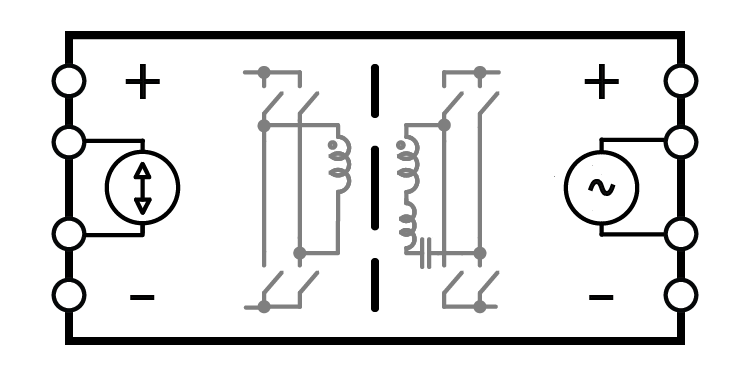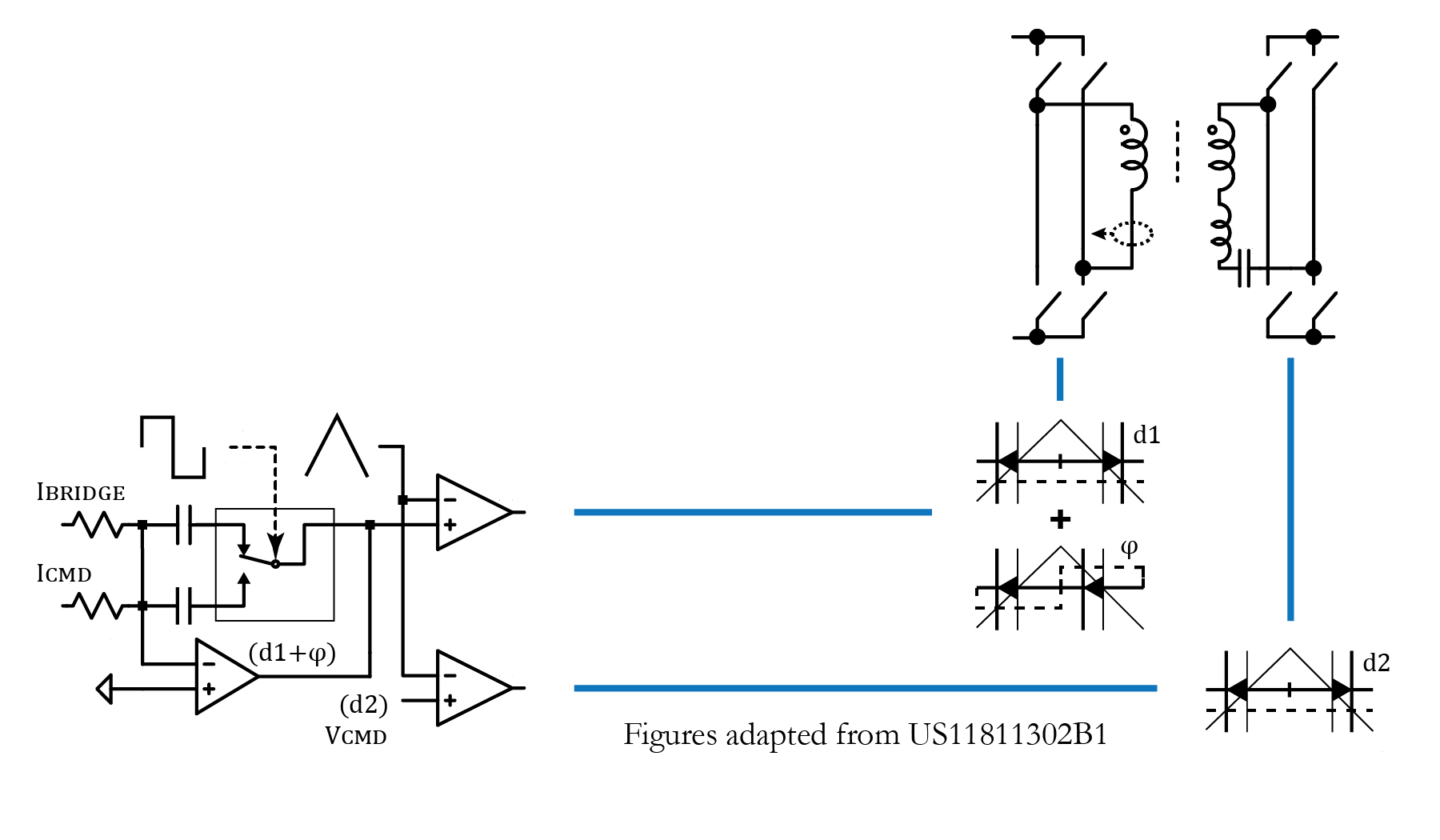Simple and Efficient Harmonic Control
Synchronous average harmonic current control linearizes a resonant power stage about an efficient operating point, resulting in a simple gain relationship (V2/V1=n·sin(πd1)/sin(πd2)) between isolated voltage busses.
The control technique is advantageous for half bridge and full bridge DC/DC power converters, and supports (AC&DC)/(DC&AC) power conversion in a single stage with minimal complexity.
Synchronous Average Harmonic Compensation
A synchronous average harmonic current compensator functions to average bridge current synchronously over each half of a switching period. The output of the compensator encodes a superposition of a duty cycle command and a phase command which respectively control low frequency current and minimize reactive switching current. This technology enables stable and efficient phase control of resonant power stages.
The superimposed duty cycle command controls the half period average common signal:
Low frequency bridge current tracks a regulated value
The superimposed phase command minimizes the half period average difference signal:
Reduces reactive current and couples current transfer
Achieves voltage regulation with low impedance buck-boost gain


